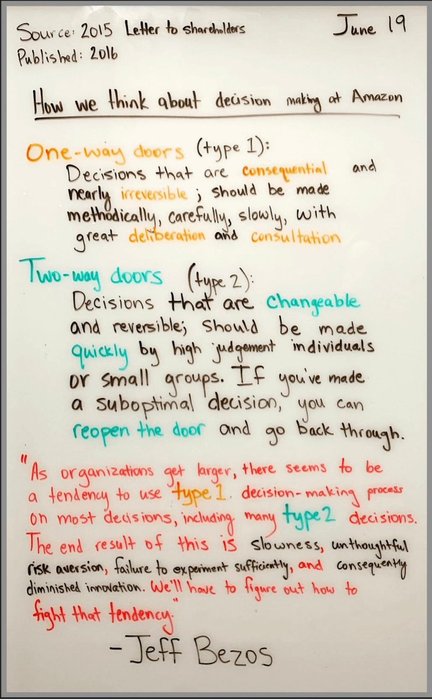Jeff Bezos on how to delegate some types of decisions (2-way doors), while spending majority of your time & resources on the others (1-way doors):
“Some decisions are consequential and irreversible – one-way doors – and these decisions must be made methodically, carefully, slowly, with great deliberation and consultation. We can call these Type 1
... See more
Such a simple but powerful framework by Bezos.
Bad leaders spend way too much time on type 1 decisions because:
- They can’t distinguish type 1 & 2 decisions
- They don’t fully trust their people https://t.co/QHPzQ2L3QR

